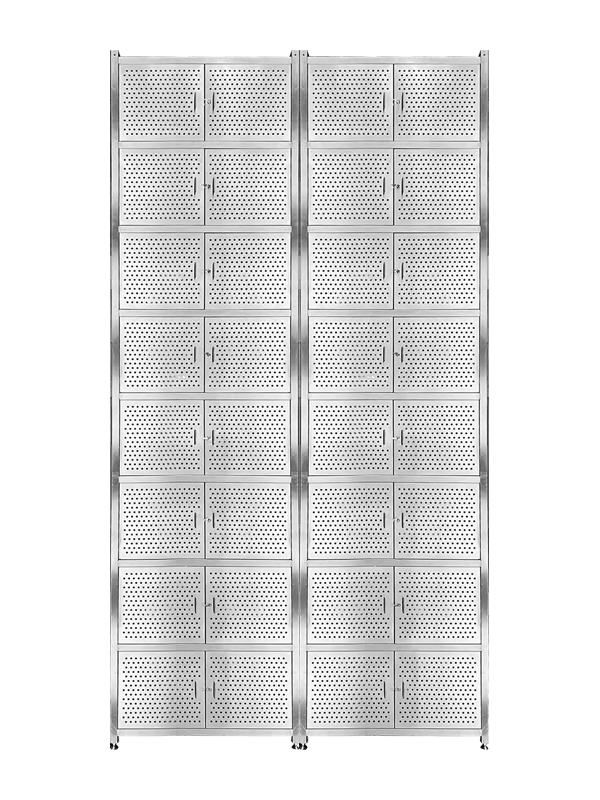Stainless steel locker can use various locking mechanisms to secure their contents. The choice of locking mechanism depends on the level of security required, user convenience, and the specific application. Here are some common locking mechanisms used in stainless steel lockers:
Key Locks: These are traditional locks that require a physical key to open. Each locker user has their own unique key, and only they can access their locker. Key locks are simple and cost-effective but may require key management.
Padlocks: Padlock hasps or loops are integrated into the locker design, allowing users to secure their lockers with their own padlocks. This method provides individual security for each user, but it requires users to supply their own locks.
Combination Locks: Combination locks feature a dial or keypad for users to input a numerical combination to open the locker. Combination locks are convenient as there are no keys to manage, but users must remember their combinations.


Electronic Keypad Locks: These locks use a keypad with a PIN code for access. Users input their unique PIN to unlock the locker. Electronic keypad locks are convenient and allow for easy code changes if needed. Some models may offer additional features like audit trails and temporary access codes.
RFID (Radio-Frequency Identification) Locks: RFID locks use RFID technology to grant access. Users typically have an RFID card or key fob that they swipe or place near the lock to open it. This system can provide a high level of security and tracking capabilities.
Biometric Locks: Biometric locks use fingerprint, retina, or other biometric scans to verify the user's identity. They offer a high level of security but can be more expensive and complex to implement.
Coin-Operated Locks: Common in public facilities like gyms or swimming pools, these locks require users to insert a coin to access the locker. Once the coin is removed, the locker becomes available for the next user.
Multi-Point Locking Systems: These systems feature multiple locking points, typically at the top, bottom, and sides of the locker door, providing enhanced security and resistance to prying or tampering.
Master Key Systems: In institutional settings, master key systems are used to provide authorized personnel (e.g., staff or security) with a master key that can open multiple lockers, while users have their individual keys.
Central Control or Access Control Systems: In advanced locker setups, locks can be integrated into central control or access control systems, allowing for centralized management of locker access, user permissions, and audit trails.

 English
English 中文简体
中文简体












